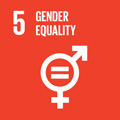- Docente: Marina Carfagna
- Credits: 1
- Language: Italian
- Teaching Mode: In-person learning (entirely or partially)
- Campus: Bologna
- Corso: First cycle degree programme (L) in Midwifery (cod. 9201)
Learning outcomes
At the end of the module, the student is able to apply the knowledge to contribute to the implementation of organizational models and strategic business programs, with a view to continuous improvement of performance quality.
Course contents
- Generality on the organizations, main organizational theories, the current legislation with particular reference to the maternal and child area.
- The organizational environment and context of care of the midwife: hospital area Hub and Spoke model and area family consultants.
- The Department: the departmental organizational model of maternal and child area and organization integration between territory and hospital.
- DM 70/2015 Regulation defining the quality, structural, technological and quantitative standards of hospital care: neonatology network and birth points
- Models of organizational network of perinatal care: Maternal Assisted Transport Service (STAM)- neonatal emergency transport service (STEN);
- Knowing and using quality systems in the health care system: quality in midwifery;
- Maternal and Child Health: determination of criteria and indicators (structure, process, outcome);
- Clinical and organizational standards: scientific and legislative references;
- Indicators and quality standards of obstetric care: concept of midwifery sensitive outcome.
- Professional standards in obstetric area: European Standards for Midwifery Units Midwifery Unit Network (MUNet) (University of London 2018) and Birth Centers in Europe.
- Integrative cross-cutting clinical governance tools: guidelines, procedures, protocols, and work plans.
Teaching methods
Lectures with the use of power point and flipchart
Group work
Classroom simulations of clinical and/or organizational cases.
Analysis of projects in the maternal and child area and guided discussion with analysis of strengths and weaknesses.
Assessment methods
- Written examination through a project work with presentation of a specific "project in area in maternal and child area" and/or a PDTA.
- Oral exam: power point presentation and discussion of the project work.
Teaching tools
- material Lecture notes. Regulations and references indicated during the lectures and made available to the teacher.
- Examples of designs in maternal and child care and case studies, prepared by the teacher.
Office hours
See the website of Marina Carfagna
SDGs


This teaching activity contributes to the achievement of the Sustainable Development Goals of the UN 2030 Agenda.
